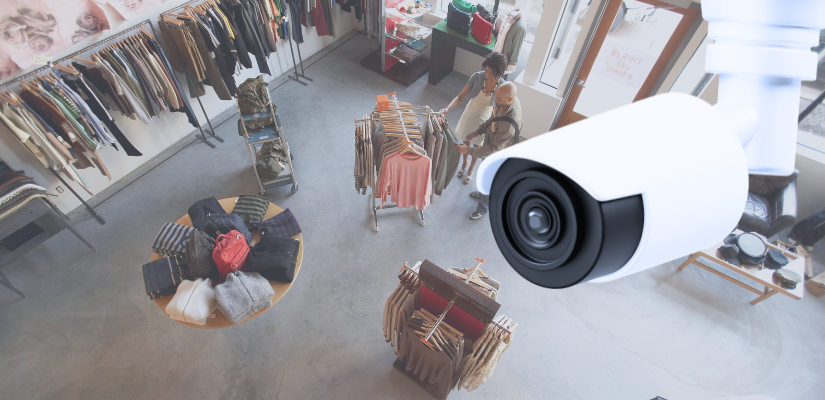How Do I Maintain Privacy of Customers and Staff with Security Cameras on my Premises?
- January 15, 2024
- Posted by: BAMMS
- Category: CCTV Systems, Other

Security is an undeniable priority for almost all businesses. However, as we embrace commercial security systems to safeguard our premises, a crucial dilemma emerges: how can we maintain the security of our customers and staff without compromising their privacy?
Today, let’s address this challenge head-on, with practical insights and best practices for achieving the delicate balance between effective security measures and respecting privacy regulations.
Security Surveillance: How Can Businesses Maintain Customer and Staff Privacy?
The Importance of Security Measures
Robust security measures are no longer a luxury; they’re a business imperative. With the rising tide of security threats, from theft and vandalism to more sophisticated cyber threats, businesses are compelled to invest in surveillance technologies to protect their assets, employees, and customers.
From small businesses to large enterprises, potential threats are diverse and ever-present. Whether it’s deterring criminal activity or identifying and responding to security breaches, surveillance cameras play a crucial role in safeguarding the interests of businesses.
Privacy Concerns in Commercial Surveillance
The landscape of privacy concerns is undergoing a significant transformation, largely influenced by the advancement of surveillance cameras. What was once a passive observer has become an intricate network of eyes, raising questions about the boundaries between security and privacy.
Businesses must navigate a complex web of privacy regulations to ensure their security measures comply with legal standards. According to Business.qld.gov.au, in Queensland: ‘If you use video or audio surveillance and recordings in your business, you must ensure that you do not breach section 227A of the Criminal Code. The Code makes it an offence to record video of people without their consent in places where they would reasonably expect privacy (e.g. a changeroom).’
Why Customers and Staff Might Be Uncomfortable with Security Cameras:
- Invasion of Personal Space: Individuals may feel their personal space is invaded when surveillance cameras are placed in areas they expect privacy.
- Fear of Constant Monitoring: The perception of being constantly monitored can create discomfort, as individuals may feel their every move is being scrutinised, leading to a sense of being ‘watched’ at all times.
- Concerns about Data Security: With the rise in cyber threats, there’s a heightened awareness about the security of the data captured by surveillance cameras. Individuals may worry about the potential for data breaches and unauthorised access to their personal information.
- Lack of Consent: If individuals are unaware of or haven’t given explicit consent for the use of surveillance cameras, it can lead to feelings of violation.
- Potential for Misuse: Concerns about the misuse of surveillance footage, whether by the business itself or by malicious actors, can contribute to discomfort. Individuals may worry about their images being used without consent or for unintended purposes.
- Cultural and Personal Privacy Norms: Different cultures and individuals may have varying norms and expectations regarding privacy. What one person considers acceptable might be discomforting for another. Understanding and respecting these diverse perspectives is crucial.
Striking the Right Balance
Navigating the above concerns requires a nuanced approach that combines effective security measures with a deep understanding of the factors that contribute to discomfort. This understanding is essential for businesses to strike the right balance between security and respecting the privacy expectations of customers and staff.
Achieving this balance begins with transparency. Businesses should openly communicate with customers and staff about the presence and purpose of surveillance cameras. Clear policies and guidelines set the foundation for trust and understanding.
Keep privacy considerations in mind from the beginning and incorporate them in the initial planning stages of security systems. This involves thinking proactively about how to mitigate privacy risks while still achieving the desired security outcomes.
Best Practices for Maintaining Privacy
- Strategic Camera Placement: The placement of surveillance cameras is critical. By strategically positioning cameras, businesses can capture essential areas while minimising intrusion into private spaces. Avoiding direct views into private offices, restrooms, or changing areas is crucial.
- Masking and Blurring: Technological solutions such as masking and blurring features offer a layer of protection for sensitive information and identities. This ensures that even if footage is accessed, the privacy of individuals is maintained.
- Data Encryption: Encrypting surveillance data is an essential step to prevent unauthorised access. This not only safeguards the privacy of individuals captured on camera but also ensures that the data remains secure in the event of a breach.
Informed Consent and Notification
Businesses should invest in clear signage to inform customers and staff about the presence of surveillance cameras. Well-placed signs create awareness and set expectations regarding privacy within the premises.
Also, obtaining informed consent is a crucial aspect of maintaining privacy. In areas where privacy expectations may differ, such as staff-only spaces, businesses should clearly communicate and seek consent from individuals.
Employee Training and Awareness
Employee education is paramount in creating a culture of awareness and respect for privacy. Staff should be well-versed in the organisation’s privacy policies and understand the importance of adhering to them. Employees should be equipped to handle customer inquiries about surveillance and privacy. Providing them with the information and training to address concerns demonstrates a commitment to transparency.
Regular Audits and Compliance Checks
Regular audits of surveillance systems ensure compliance with privacy policies and regulations. Businesses should schedule periodic checks to assess whether their security measures align with the evolving landscape of privacy expectations. In a dynamic regulatory environment, businesses must be adaptable. Staying informed about changes in regulations and privacy concerns allows for proactive adjustments to security measures.
Brisbane Alarm Monitoring Security Services (BAMSS) is a trusted partner for businesses seeking expert guidance on implementing security solutions that prioritise privacy. Consult with our experts to explore tailored security solutions aligned with both your security needs and privacy considerations.
Ready to take the next step? Contact BAMSS today to initiate a conversation about your specific security and privacy requirements.
Brisbane Alarm Monitoring Security Services provides security camera installation, camera monitoring systems as well as a range of business security solutions including facial recognition security system installation in Brisbane, the Sunshine Coast, Gold Coast, Logan, Redlands and Brisbane Bayside.

